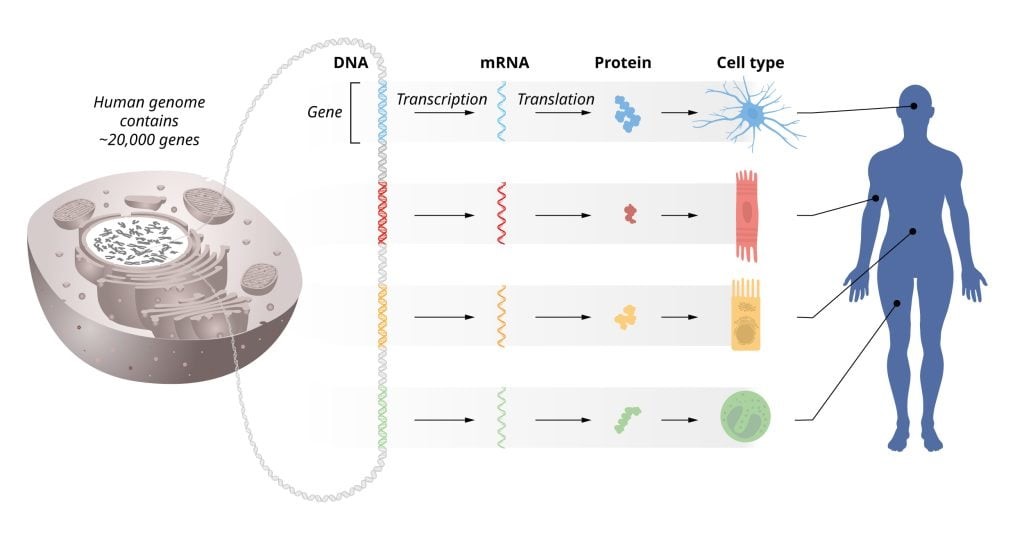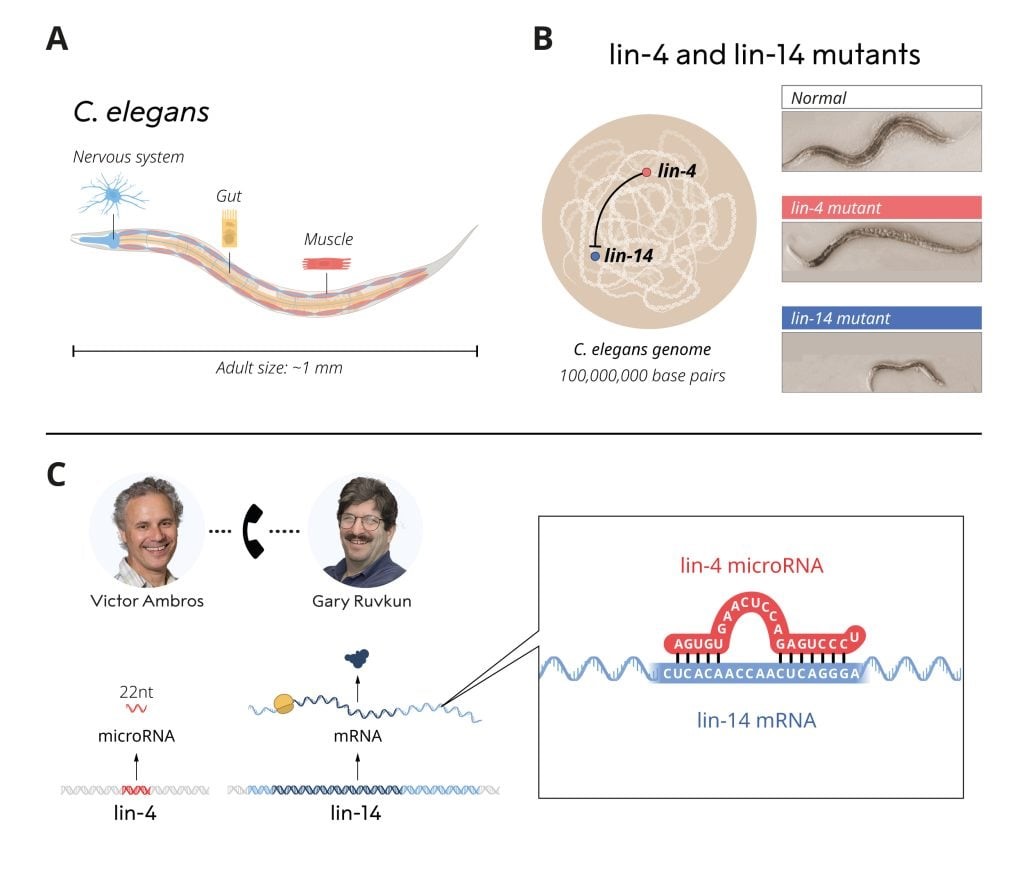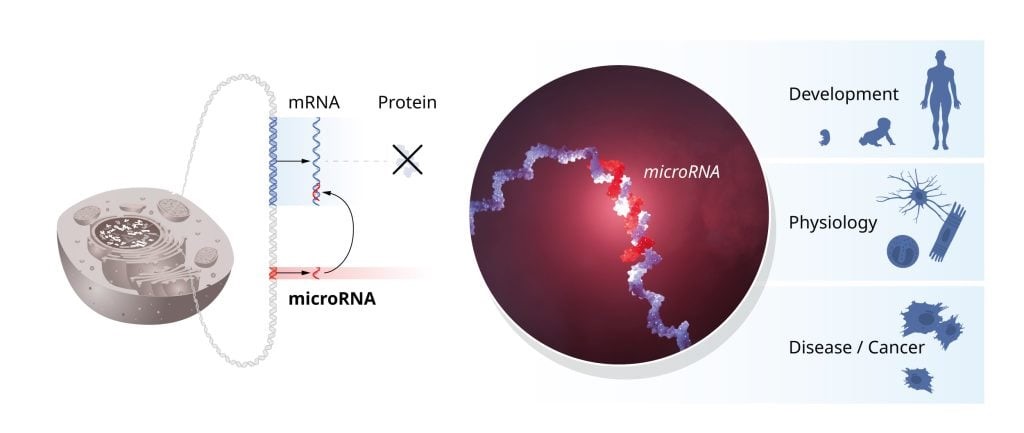2024 Nobel Prize for Medicine was awarded to Ambros and Ruvkun for their discovery of Gene regulation by microRNA.
Transcription is the flow of genetic information from DNA to messenger RNA (mRNA), and then on to the cellular machinery for protein production.
Gene expression refers to whether a particular gene is making too much, too little or the normal amount of its protein at a particular time.

Proteins handle all kinds of important jobs in the body, such as making muscles contract or helping nerves communicate.


Mutations in one of the proteins required for microRNA production result in the DICER1 syndrome, a rare but severe syndrome linked to cancer in various organs and tissues.
Andrew Z. Fire and Craig C. Mello, awarded the Nobel Prize in 2006, for RNA interference, where specific mRNA-molecules are inactivated by adding double-stranded RNA to cells.

References